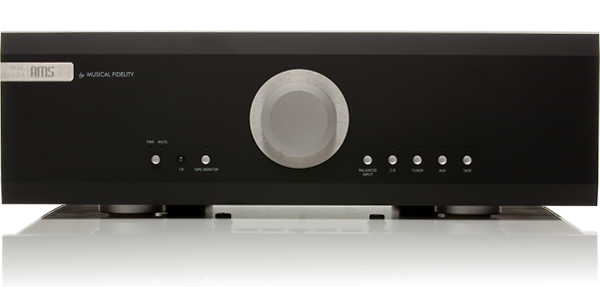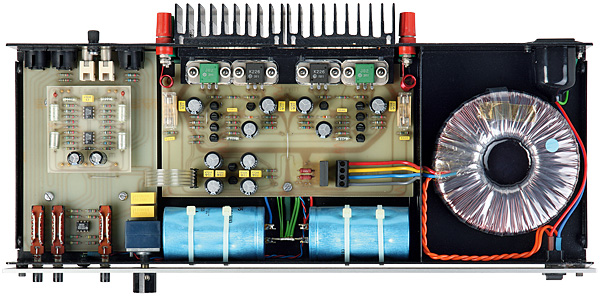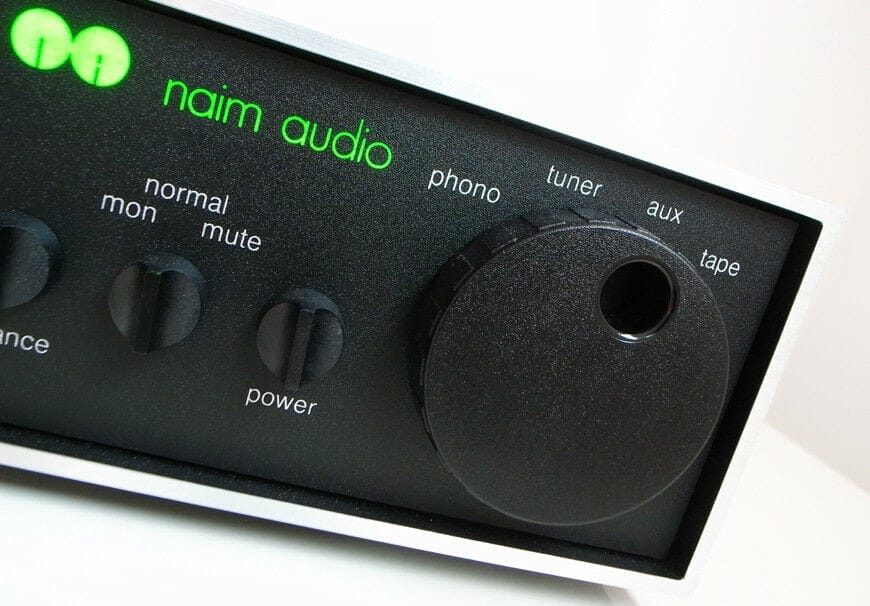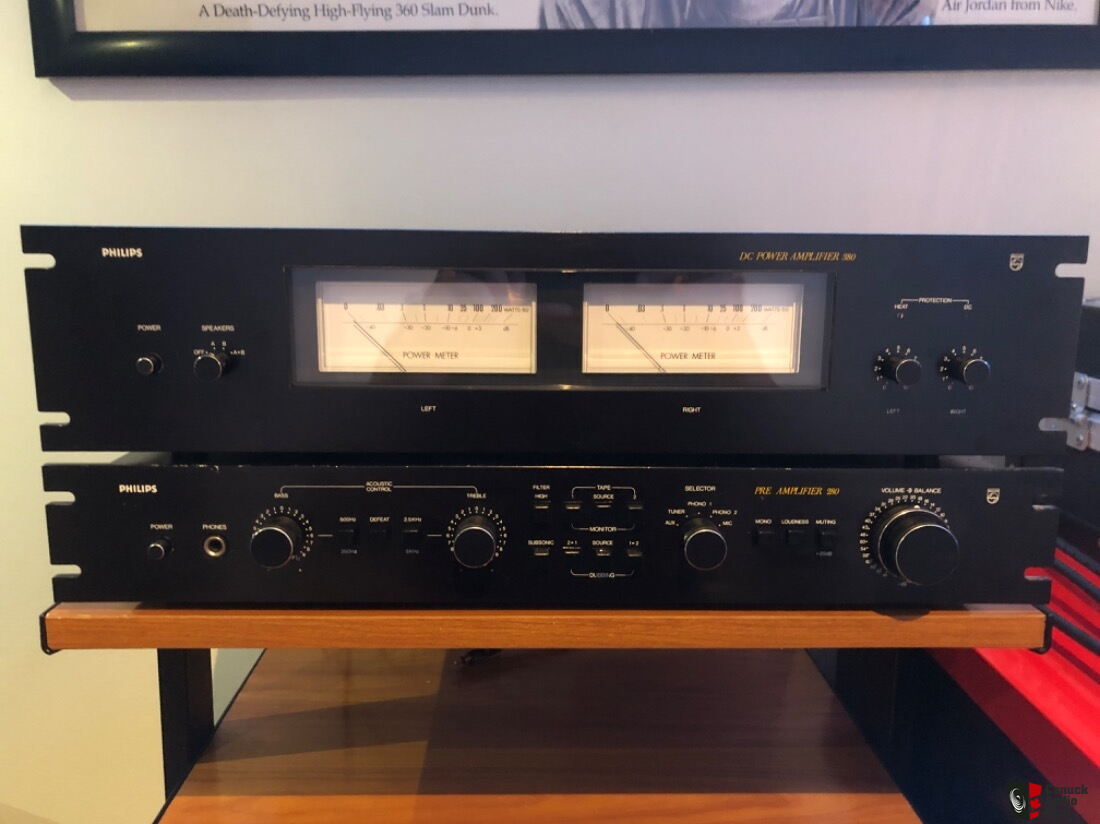Passive preamps have one advantage: Their short signal lines and lack of circuit complexity result in a clear, detailed sound. They aren’t, however, a cure-all for the problem of controlling your source. They have traditionally depended on resistive networks selected via a switch or rotary variable resistors, which can result in significant impedance mismatches at either the source or load end, resulting in a perceived loss of dynamics.
So, before you go to the party, what can the silver box do for you? MF Audio’s Passive Magnetic Preamplifier solves these issues by using a custom-made transformer with the largest commercially available 80 percent nickel Permalloy core, allowing it to be passive while still providing gain. If you have a low gain power amplifier, you can turn the switch around the back to add an extra 6dB of oomph, bringing it up to full efficiency. A volume control with two attenuating transformers and ELMA switches point-to-point hand wired into a custom enclosure achieves this.
It does have a lot of functionality for a so-called “passive preamp.” There are balanced and unbalanced inputs and outputs available, and all internal connections are made with 0.6mm silver coated solid core copper wire with PTFE insulation and are hand connected point to point. We employ top-of-the-line Neutrik and Deltron connectors, as well as Swiss-made ELMA silver contact rotary switches. A three-way grounding switch makes it simple to address any grounding concerns, and the transformer separates components, preventing ground loops and decreasing noise. Mumetal shielding can provide protection against magnetic fields from the outside world. The three-way rear-mounted grounding switch lets you choose between a floating output ground or the internal ground reference via the RCA phono or XLRs (and to input ground).
The build quality is good, though not in the same opulent vein as, say, Japanese high-end. Six inputs (four unbalanced, two balanced) are available, each numbered and selectable through the front panel knob. The rear-mounted connectors are decent, and the twenty-position volume and six-position source switches move quite cleanly (although the review sample had a little noise when switching between inputs). I burnt the MF Audio preamp in for the required one hundred hours, with a CD player on repeat, my Pioneer SPEC2 power amp turned off, and the MF volume control set to maximum, before listening in earnest. Pioneer’s matching SPEC1 discrete transistor design and a World Audio KLPP1 valve preamplifier were used as preamp references.
This device struck me in a way that only a few passive preamplifiers have. It has a self-effacing nature, which means that switching from a standard active solid-state or valve preamp brings the character of your previous machine into stark focus. After several weeks of listening to Pioneer’s ultra-high-end SPEC1 loudspeakers, I found the MF Audio to be very boring through Perigee’s outstanding FK-1L loudspeakers in my system. However, closer examination revealed that it was more a case of the Pioneer’s chrome-plated edge being lost, which I had grown accustomed to.
The full nature of the cartridge shined through on vinyl, thanks to Trichord’s latest Delphini phonostage driving one of the MF’s unbalanced inputs, which was fed through my Michell Orbe/Origin Live Illustrious/Dynavector DV20X-H. This high-output MC has a warm, rich sound that reminds me of a 1970s Supex SD900, and this preamp accentuated it. It had appeared bright and breezy through the Pioneer, almost like an Audio Technica! The added zest from the SPEC1 made for a vibrant and entertaining listen, but it wasn’t an accurate one.
The MF did the same thing with CD. It’s not so much dull sounding as it is ‘neutral,’ deliberately refusing to impart any zing (which comes from solid-state) or bloom (courtesy of valves). The end result may sound a little flat at first, but it allows you to settle in and listen to your source rather than being dictated by your preamplifer. Pink Moon by Nick Drake on Meridian MCD Pro was a really smooth and silky listen, thanks in part to the CD spinner. So I switched to Sony’s CDP-X77ES, and things became noticeably tighter and more sharp – almost to the point of being excessive – demonstrating just how transparent this device can be.
A Roller-Skating Jam by De La Soul The vinyl release of Saturdays showed the machine’s worth. Because there was no grain or edge, I was able to increase the volume and really manipulate the Perigees. The MF was able to pick up on some hefty bass notes and explosive dynamics on this 45RPM twelve incher. One repeated sample, from Frankie Valley’s Grease, was harsh and computeris=zed at first, but then came the lead female vocal, which was delightfully smooth, rich, and fulsome. This proved that this pre is transparency personified, and that when combined with like-minded ancillaries, it can produce a hugely diversified tonal pallet. It was a fantastic listen, especially with the incredibly tight and snappy breakbeats and silky percussion sounds.
Finally, Music First Audio’s Passive Magnetic Preamplifier is neither as dull nor as tonally limited as other passive preamps I’ve heard. You might miss the absence of transistor fizz or tube coloration that you’re used to, but you’re sure to appreciate the exceptional transparency. Warm brass instruments provide a warm sound, whereas harsh and wiry strings produce a hard and wiry sound. The voices are beautifully pure and unadulterated, while the percussion is rapid and tight without any fake edge. Another notable feature is its soundstaging, which provides a large and spacious recorded acoustic that extends surprisingly far beyond the speakers. Instruments are exactly and precisely situated in space within this. This product is all about openness, neutrality, and – to be honest – just a smidgeon of euphonic silkiness. It’s a real high-end audiophile value, with a sound that’s both open and refined.







